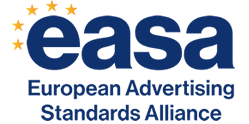EASA is a key stakeholder at the European and international levels advocating for responsible advertising for food and non-alcoholic beverage products. This topic is debated on many platforms and on many regulatory levels. We follow the developments of the EU code of conduct on Responsible Food marketing and Business Practices.
The International Chamber of Commerce (ICC) updated in 2019 its Framework for Responsible Food and Beverage Marketing Communications. The Framework provides concrete interpretation of international standards for advertising food and beverage products. National ad self-regulatory organisations in EASA membership have adopted these guidelines on top of which they often build sector-specific rules.
Self-regulatory rules across Europe
By adopting robust self-regulatory standards and adequately funding existing advertising standards organisation to ensure high-level compliance, the industry can proactively respond to societal trends and consumer expectations, thereby enhancing its credibility and long-term sustainability.
General ad standards apply to all food products in all 26 European countries represented in EASA’s network. Whether for food products specifically or by extension of the general rules, SROs’ codes apply universally across all media type. These provisions cover, for example, misleading claims, encouraging excessive or unnecessary consumption, extraordinary claims about benefits from consuming food products, or depicting scenes detrimental to a healthy and balanced lifestyle.
A majority of SROs have implemented standards directly into their codes or are guarantors of industry commitments that include specific rules about advertising ‘unhealthy foods’ or unhealthy habits. These come on top of rules disallowing ads to abuse children’s incredulity or trust, misinforming about products’ composition, including children idols around unhealthy products, promoting or trivialising unhealthy or inactive lifestyles, drawing parallels between consuming unhealthy products and improved performance, implying or stating that excessive consumption is allowed for ‘healthier’ versions, or creating a false sense of urgency, among others.
Some SROs have developed, with industry support, exposure rules bringing added protection for children from ads promoting foods high in fat, salt, and sugar (HFSS) as classified under a nutrient profiling model. These rules ban HFSS food ads from being served to children online, at certain moments on linear TV and radio, and in certain out-of-home settings to 12, 13, 15, or 16 year-olds and under depending on the country or based on their share out of the total audience.
Advertising self-regulatory organisations (SROs) regulate ad content across all media according to local rules, inspired by international standards, and which go beyond national and European legislation. SROs develop, implement, and enforce high content standards for specific products with stakeholders’ full support. The ultimate goal of collective ad self-regulation is to foster trust, which in turn helps create a trusted and mature competitive market. The exact type of ethical rules, guiding instruments, or standards that SROs develop is discussed and decided at local level with the concerned brands, both global and local ones.
EU and national-level regulatory developments
At the European Union level, there are three main regulatory instruments applicable to food advertising, in particular regulating children’s exposure:
- Audiovisual Media Services Directive (AVMSD): Encourages self-regulation and co-regulation to reduce children’s exposure to HFSS food advertisements. It mandates Member States to foster codes of conduct that effectively limit such exposure.
- Food Information to Consumer Regulation (FICR): Prohibits misleading information in food advertising, ensuring that consumers receive accurate information about food products.
- Nutrient & Health Claims Regulation (NHCR): Establishes rules for nutrition and health claims in food advertising, focusing on the accuracy and substantiation of such claims.
At the national level, there are two types of regulatory instruments: the transposition of the AVMSD and national sectoral provisions. For some Member States, the local transposition of the AVMSD has led to recognition of local codes of conduct set up and managed by the local ad standards organisation (SRO) – this the case, for example, in Ireland and Bulgaria, to name just two. Other countries have implemented co-regulatory frameworks that include the wider relevant local food sector, such as in France (see below). The AVMSD’s transposition has consolidated a strong regulatory framework in concert with national ad standards regulators and industry to allow for local nuances whilst building a harmonised level playing field.








